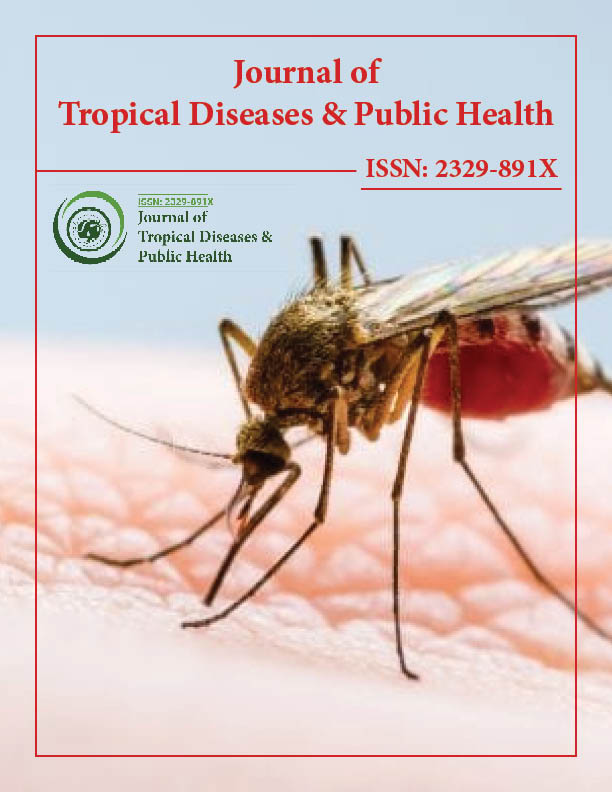Indexed In
- Open J Gate
- Academic Keys
- ResearchBible
- China National Knowledge Infrastructure (CNKI)
- Centre for Agriculture and Biosciences International (CABI)
- RefSeek
- Hamdard University
- EBSCO A-Z
- OCLC- WorldCat
- CABI full text
- Publons
- Geneva Foundation for Medical Education and Research
- Google Scholar
Useful Links
Share This Page
Journal Flyer

Open Access Journals
- Agri and Aquaculture
- Biochemistry
- Bioinformatics & Systems Biology
- Business & Management
- Chemistry
- Clinical Sciences
- Engineering
- Food & Nutrition
- General Science
- Genetics & Molecular Biology
- Immunology & Microbiology
- Medical Sciences
- Neuroscience & Psychology
- Nursing & Health Care
- Pharmaceutical Sciences
Opinion Article - (2025) Volume 13, Issue 1
A Global Perspective on the Transmission and Control of Vector Borne Diseases
Gao Xiulian*Received: 24-Feb-2025, Manuscript No. JTD-25-29269; Editor assigned: 26-Mar-2025, Pre QC No. JTD-25-29269; Reviewed: 12-Mar-2025, QC No. JTD-25-29269; Revised: 19-Mar-2025, Manuscript No. JTD-25-29269; Published: 26-Mar-2025, DOI: 10.35241/2329-891X.25.13.467
Description
Vector-borne diseases are infections transmitted to humans and other animals by blood-feeding arthropods such as mosquitoes, ticks, fleas, and sandflies. These vectors carry pathogens viruses, bacteria, or parasites that can cause serious and sometimes fatal illnesses. Vector-borne diseases represent a significant portion of the global burden of infectious diseases, particularly in tropical and subtropical regions, where environmental conditions favor vector survival and reproduction.
Mosquitoes are the most well-known vectors and are responsible for transmitting several major diseases. Malaria, caused by Plasmodium parasites, is one of the most prevalent mosquito-borne diseases. It is transmitted through the bite of infected Anopheles mosquitoes and causes symptoms such as fever, chills, and flu-like illness. Severe cases can result in coma and death, especially in young children and pregnant women. Despite decades of control efforts, malaria remains a major public health concern in sub-Saharan Africa, parts of Asia, and Latin America.
Ticks are another major vector group and are responsible for transmitting diseases such as Lyme disease, Rocky Mountain spotted fever, anaplasmosis and tick-borne encephalitis. Lyme disease, caused by the bacterium Borrelia burgdorferi, is the most common tick-borne illness in North America and Europe. It typically begins with a distinctive “bullseye” rash and flu-like symptoms and, if left untreated, can lead to joint pain, neurological problems, and heart issues. Ticks are typically found in wooded or grassy areas and attach to hosts to feed on blood, providing an opportunity for disease transmission.
Sandflies transmit leishmaniasis, a disease caused by Leishmania parasites. This disease manifests in several forms, including cutaneous leishmaniasis causing skin ulcers, mucocutaneous leishmaniasis affecting mucous membranes, and visceral leishmaniasis a severe form that affects internal organs. Leishmaniasis is found in parts of the Middle East, South America, Africa, and South Asia. Its transmission is influenced by environmental factors, socio-economic conditions, and human migration patterns.
Fleas are the vectors of plague, a bacterial disease caused by Yersinia pestis. Although often associated with historical pandemics like the Black Death, plague still occurs in some parts of the world, including Madagascar and parts of the western United States. The most common form is bubonic plague, characterized by swollen lymph nodes, fever, and weakness. Without prompt treatment, it can progress to septicemic or pneumonic plague, both of which can be fatal.
The control and prevention of vector-borne diseases require an integrated approach. Vector control remains the most effective way to reduce transmission. Strategies include the use of insecticide-treated bed nets especially for malaria, indoor residual spraying, environmental management to eliminate breeding sites, and personal protective measures like repellents and protective clothing. In some areas, innovative methods such as releasing genetically modified mosquitoes or introducing Wolbachia infected mosquitoes are being tested to reduce mosquito populations or their ability to transmit disease.
Vaccines are available for some vector-borne diseases, such as yellow fever, Japanese encephalitis, and dengue under specific conditions. However, most do not have widely accessible vaccines, making vector control and early diagnosis critical components of public health strategies. Prompt diagnosis and treatment not only reduce the severity of illness in affected individuals but also help prevent further spread by interrupting the transmission cycle.
Conclusion
Vector-borne diseases are a major global health challenge influenced by environmental, biological, and social factors. While significant progress has been made in understanding and controlling these diseases, they continue to cause considerable morbidity and mortality worldwide. Strengthening surveillance, improving access to healthcare, investing in research and innovation, and addressing the broader determinants of health are key to reducing the burden of vector-borne diseases and preventing future outbreaks.
Citation: Xiulian G (2025). A Global Perspective on the Transmission and Control of Vector Borne Diseases. J Trop Dis. 13:467.
Copyright: © 2025 Xiulian G. This is an open-access article distributed under the terms of the Creative Commons Attribution License, which permits unrestricted use, distribution and reproduction in any medium, provided the original author and source are credited.

